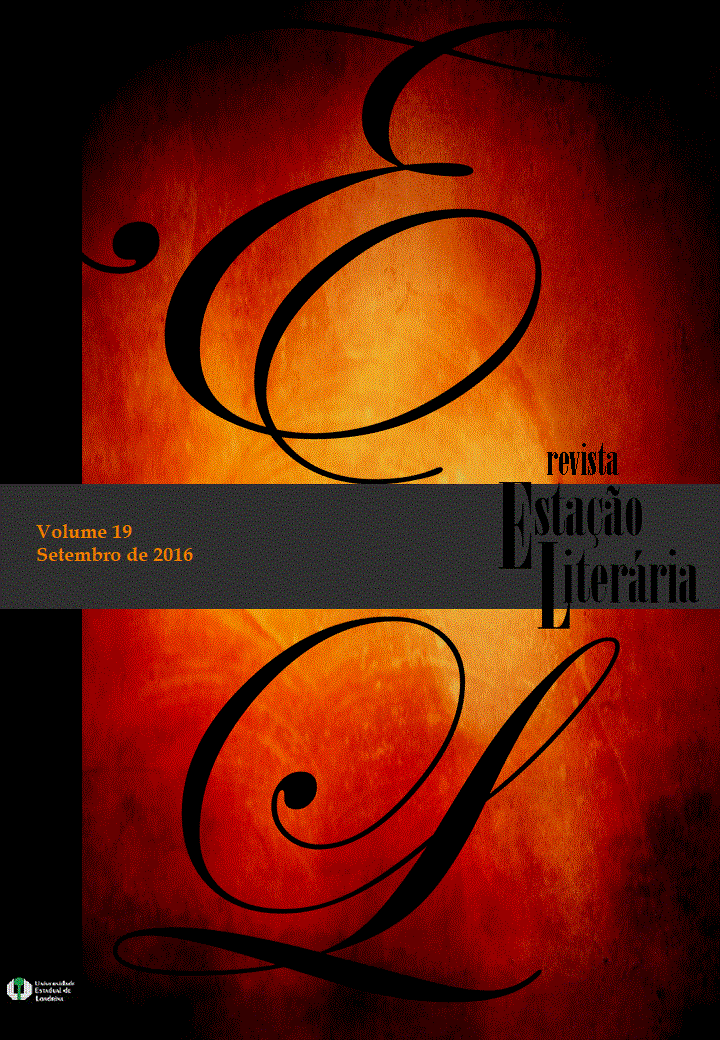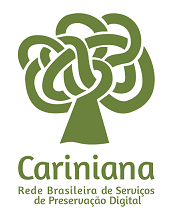Blake and the prophetic voice of the devil: the duality of body and mind in parallel to text and image
DOI:
https://doi.org/10.5433/el.2017v19.e30714Keywords:
Duality, Demon, Composed art.Abstract
Far beyond the critical and theorical quarrel between poetry and painting, William Blake’s illuminated books can be approached as a hybrid and composed form of art. In this sense, we intend to analyze the relation between text and images in plate 4 of the book The Marriage of Heaven and Hell, which is titled The Voice of the Devil. This session attacks dualistic religious ideas that divide the “human whole” into body and soul. Through this criticism, Blake aims to reconcile the contraries of heaven and hell, body and soul, and in a parallel manner, of poetry and painting. As theorical and critical references, we approach authors like Bosi, Frye, Makdisi e Wolfson.Downloads
References
BACHELARD, Gaston. A psicanálise do fogo. São Paulo: Martins Fontes, 1994.
BAXANDALL, Michael. Padrões de Intenção: a explicação histórica dos quadros. São Paulo: Companhia das Letras, 2006. p. 31-44.
BLAKE, William. Laocoön, copia B, c. 1826-27. Disponível em: http://www.blakearchive.org/exist/blake/archiv /work.xq?workid=laocoon&java=no. Acesso em: 2 fev. 2017.
BLAKE, William. The Marriage of Heaven and Hell. Cópia H, 1790. Disponível em: http://www.blakearchive.org/exist/blak /archive/copy.xq?copyid=mhh.h&java=no. Acesso em: 02 fev. 2017.
BOSI, A. O Ser e o Tempo da Poesia. São Paulo: Companhia das Letras, 2000. p. 19-46.
BUTLER. Judith P. Subjects Hegelian Reflections in Twentieth-Century France. New York: Columbia University Press, 1987.
FRYE, Northrop. Fearful Symmetry: a study of William. Princeton: Princeton University Press, 1990.
MAKDISI, Saree. The political aesthetic of Blake’s images. In: EAVES, M. Cambridge Companion to William Blake. Cambridge: Cambridge University Press, 2003. p. 110 – 132.
GREEN, Matthew J. A. Visionary Materialism in the Early Works of William Blake: The Intersection of Enthusiasm and Empiricism. New York: Palgrave Macmillan, 2005.
HAGSTRUM, Jean H. William Blake, Poet and Painter: An Introduction to the Illuminated Verse. Chicago: Chicago University Press, 1964.
KOJÈVE, Alexandre.Introdução à leitura de Hegel. Rio de Janeiro: Editora da Universidade do Rio de Janeiro, 2002.
LESSING, G. E. Laocoonte ou Sobre As Fronteiras da Pintura e da Poesia. São Paulo: Iluminuras, 2011.
MAKDISI, Saree. The political aesthetic of Blake’s images. In: EAVES, M. Cambridge Companion to William Blake. Cambridge: Cambridge University Press, 2003. p. 110 – 132.
MELLO, S. J. Ut Pictura Poesis e as Origens Críticas da correspondência entre a literatura e a pintura na antiguidade clássica. Miscelânea, v. 7, p. 215-241, 2010.
MITCHELL, W. J. T. Blake’s Composite Art. Princeton: Princeton University Press, 1985.
TAVARES, Enéias Farias. As Portas da Percepção: Texto e Imagem nos Livros Iluminados de William Blake. Tese (Doutorado). Santa Maria: Universidade Federal de Santa Maria, 2012.
WARD, A. "William Blake and his circle". In: EAVES, M. Cambridge Companion to William Blake. Cambridge: Cambridge University Press, 2003. p. 19-36.
WOLFSON, Susan J. Blake’s language in poetic form. In: EAVES, M. Cambridge Companion to William Blake. Cambridge: Cambridge University Press, 2003. p. 63–84.
Downloads
Published
How to Cite
Issue
Section
License
A revista se reserva os direitos autorais sobre as contribuições publicadas, sem retribuição material para o autor, podendo disponibilizá-las on-line no modo Open Access, mediante sistema próprio ou de outros bancos de dados; também poderá efetuar, nos originais, alterações de ordem normativa, ortográfica e gramatical, com o intuito de manter o padrão culto da língua, contando com a anuência final dos autores. As opiniões emitidas pelos autores são de sua exclusiva responsabilidade.














